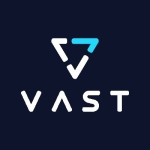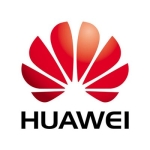What is our primary use case?
Mainframe and open system storage that replicates consistently.
We are a financial services organization, so we are data and investments. It is what our company uses to run. However, I don't know that PowerMax, or VMAX, is anything special compared to other products that we have our data on.
How has it helped my organization?
A lot of our critical applications are mainframe and open system-based, and they spread between those two. So, we need a platform like PowerMax to be able to recover in a DR scenario.
What is most valuable?
We can consistently replicate mainframe and open system and have a single recovery point.
What needs improvement?
I started using CloudIQ two days ago, and all it's been doing is filling up my phone with alerts that aren't worthwhile. There is something going on there that the array is flagging things as inappropriate that aren't really impactful.
I would like to have Snapchat scheduling and the ability to modify that instead of erase a schedule, then recreate it. There are way better ways to do that.
Support for SRDF consistency groups within the GUI, instead of making that the command line.
Remove the need for physical or hardwired virtual servers to run consistency groups, instead make the expensive array controllers handle that.
The management interface needs improvement. It shouldn't be as hard to do some of the functions as it is. Also, it shouldn't need Windows Servers to run a million dollar array.
What do I think about the stability of the solution?
From a host IO standpoint, the stability has been very good.
From a replication standpoint, we're actually a company who turned up a bug in the brand new PowerMax. That makes me a little jaded.
What do I think about the scalability of the solution?
It scales enormously, but it's expensive to do so.
How are customer service and technical support?
The technical support has been good. When we did run into an issue, once I told them what the problem was, they were able to come up with a solution to fix the problem moderately quickly.
Which solution did I use previously and why did I switch?
We came off VMAX. Our performance requirements were to just match the VMAX levels. I find the array is doing that for host IO.
Since we were already on VMAX, our decision was related to a data center move and protecting our data. Prior to that, just getting on the VMAX product line and came from IBM. That was a look at all the mainframe products, which was a cost and functionality play. We picked the product that seemed to have the best cost and functionality with longest term company relationship.
How was the initial setup?
The initial setup was complex. I found out you can't make the new arrays talk to other arrays on a customer level. You have to reach out to Dell EMC support to do that. It's the only array in my environment where I can't, as a customer, make those changes. That's one of the things that slowed down our install.
The migration from VMAX to PowerMax wasn't much of a migration because it was a DR target. We just changed our SRDF.
What about the implementation team?
We used a reseller to purchase it, but I believe it was Dell EMC badged people who did the install.
The experience wasn't great. The install, in my mind, meant a usable box. The install that I got was a plugged in box. Then, it's like, "Oh, but we still have to do these five steps." I was under a time crunch, so that was a surprise.
Which other solutions did I evaluate?
When it's mainframe there are only three: IBM, Hitachi, and Dell EMC. The arrays at this level are all fairly competitive.
IBM doesn't support VMware the way that we needed it to.
Hitachi and EMC were neck and neck. What won it out was Dell EMC's relationship with our sales team.
What other advice do I have?
It's effective at doing what you need it to do. It's fairly high-powered, but the management interface has a long way to go to be made simple and easy to use.
If you have mainframe, you have few choices, and this is a good choice. If you don't have mainframe, there are a lot of products on the market which are much easier to use. It depends on your requirements.
SRDF/A is quite good, but even other cheaper arrays have synchronous and asynchronous replication. I don't know that I would look at a product line for this unless your needs are either enormous that you need a box this big or mainframe centric.
The Unisphere has gotten a lot better. It is fairly easy to dig into and find things. It has been a long time coming, but it's there.
Disclosure: My company does not have a business relationship with this vendor other than being a customer.











